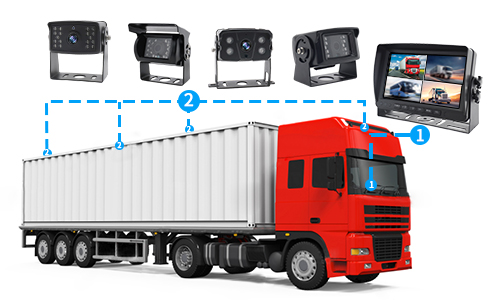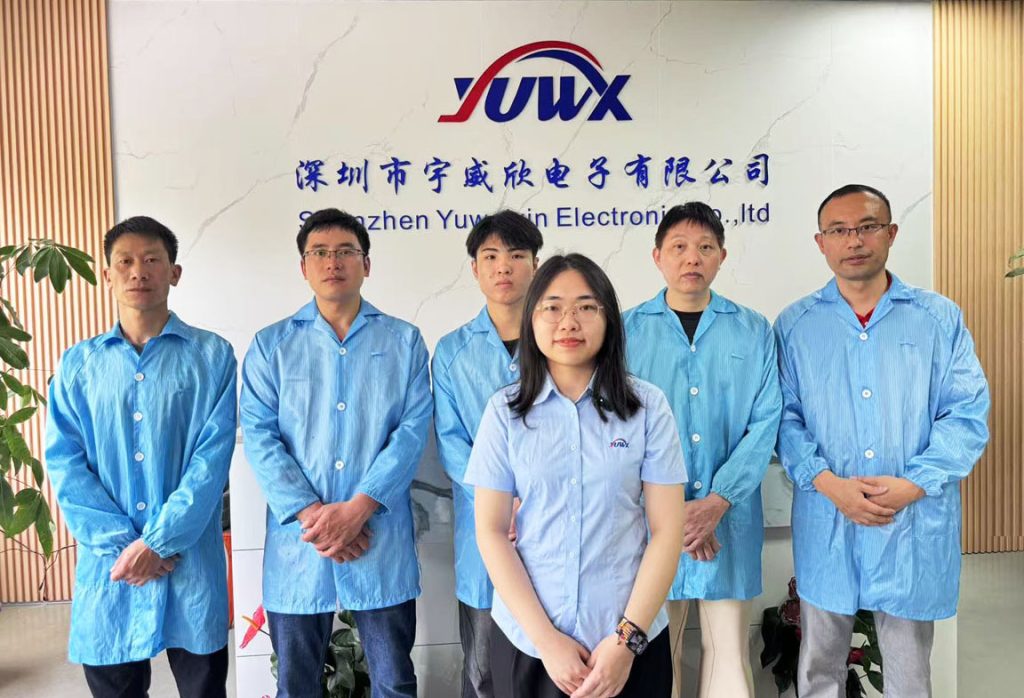Truck backup cameras have transformed vehicle safety. They provide drivers with enhanced visibility, reducing accidents during reversing. Yet, commercial trucks often operate under harsh environmental conditions. Dust, rain, snow, and extreme temperatures pose significant challenges. Therefore, engineering truck backup cameras that withstand these conditions is critical. This article explores how robust design, advanced materials, and innovative engineering converge to create durable truck backup cameras. It examines their technological features, real-world applications, and long-term benefits, highlighting how these systems ensure safety and reliability in demanding conditions.
The Importance of Weatherproof Truck Backup Cameras
Modern trucks traverse diverse terrains, including construction sites, highways, and rural roads. These environments expose vehicles to debris, water, and mechanical vibrations. Without weatherproof cameras, reversing operations risk obstruction due to dirt accumulation or lens fogging. Moreover, sudden weather changes can impair visibility, leading to costly accidents.
Truck backup cameras engineered for harsh environments combine rugged construction with advanced electronics. They maintain optimal performance despite rain, mud, or extreme cold. Weatherproofing is not merely a convenience; it is a safety necessity. By adopting robust cameras, fleet operators reduce accident risk, improve operational efficiency, and lower insurance costs.
Core Engineering Principles for Durability
Engineering truck backup cameras involves precise attention to multiple design principles. Manufacturers must balance optical clarity, mechanical strength, and electronic resilience.
-
Sealed Enclosures: Encasing the camera in a sealed housing prevents water and dust ingress. High-quality materials, such as reinforced polycarbonate or anodized aluminum, provide structural integrity. Engineers test these enclosures against industry-standard IP ratings, commonly IP69K, ensuring the cameras resist both high-pressure washing and fine dust.
-
Impact Resistance: Trucks encounter vibrations, collisions, and debris impact. Shock-absorbing mounts, reinforced frames, and durable lens covers protect internal components. Such measures extend the operational life and reduce maintenance needs.
-
Thermal Management: Harsh environments often include extreme temperatures. Engineering strategies include heat-dissipating housings, thermal coatings, and integrated ventilation channels. These solutions prevent electronic overheating and maintain image sensor stability.
-
Corrosion Resistance: Exposure to road salt and chemical agents can corrode metals and connectors. Anti-corrosion coatings, stainless steel components, and weatherproof connectors mitigate this risk. This ensures long-term reliability for vehicles operating in coastal or winter conditions.

Advanced Optical and Sensor Technologies
Beyond physical durability, engineering truck backup cameras emphasizes optics and sensors.
-
High Dynamic Range (HDR) Sensors: Trucks often reverse into areas with varying light conditions. HDR technology ensures balanced brightness and contrast, avoiding overexposure or dark shadows.
-
Wide-Angle Lenses: Wide-angle optics expand the field of view, allowing drivers to see obstacles across the vehicle’s rear. Curved or fisheye lenses reduce blind spots and improve situational awareness.
-
Anti-Fog and Anti-Glare Coatings: Lens treatments repel condensation and minimize glare from sunlight or headlights. These coatings are crucial in humid, rainy, or snowy environments.
-
Low-Light Performance: Infrared LEDs or sensitive CMOS sensors enhance night-time visibility. This allows drivers to reverse safely even in poorly lit areas.
Integration with Vehicle Systems
Engineering truck backup cameras also involves seamless integration with vehicle electronics. Modern cameras interface with in-cab displays, providing real-time video feeds. Advanced systems offer additional features:
-
Dynamic Guidelines: Software-generated lines indicate vehicle trajectory, assisting drivers in tight spaces.
-
Proximity Alerts: Sensors detect nearby objects and issue warnings to the driver, preventing collisions.
-
Multi-Camera Networks: Trucks may employ multiple cameras for a 360-degree view, all synchronized through a centralized control unit. This integration increases overall situational awareness.
Applications in Harsh Environments
-
Construction Sites: Dust, mud, and heavy machinery create dangerous reversing conditions. Weatherproof cameras maintain clear vision and resist damage from flying debris.
-
Long-Haul Freight: Trucks encounter rain, snow, and ice. Durable cameras ensure consistent performance, reducing accidents during deliveries or highway stops.
-
Mining and Off-Road Operations: Extreme dust, vibrations, and uneven terrain demand robust equipment. Cameras with reinforced housings and shock absorbers prevent frequent failures.
-
Municipal Services: Garbage trucks and snow plows operate in urban and rural conditions, where visibility is crucial. Reliable backup cameras minimize pedestrian and vehicle collisions.

Maintenance and Longevity Considerations
Engineering durable truck backup cameras also requires attention to maintenance. While weatherproof cameras reduce the frequency of repairs, preventive measures enhance longevity:
-
Regular cleaning of lenses removes dust and residue.
-
Inspections of mounts and connectors prevent mechanical failures.
-
Firmware updates maintain compatibility with vehicle systems.
By following these practices, fleets can extend camera lifespan and ensure consistent performance.
Future Innovations in Truck Backup Cameras
The next generation of truck backup cameras focuses on intelligent features and connectivity. Cloud-based video storage, AI-assisted obstacle detection, and adaptive imaging are emerging trends. These innovations complement weatherproofing, ensuring cameras perform reliably while offering advanced functionality.
For example, AI algorithms can distinguish between stationary objects and moving pedestrians, reducing false alarms. Connectivity features allow fleet managers to monitor camera health remotely, scheduling maintenance before failures occur.
Conclusion
Engineering truck backup cameras for harsh environments is a complex, multi-faceted challenge. Manufacturers must combine rugged materials, advanced optics, precise electronics, and intelligent integration. The result is a camera system that enhances driver safety, reduces operational risks, and maintains performance under extreme conditions. Weatherproof and durable cameras are no longer optional—they are essential tools for modern trucking operations. By prioritizing durability and engineering excellence, fleets can achieve safer, more efficient, and reliable reversing operations.







